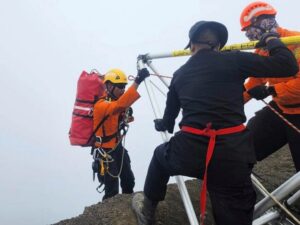Diamonds form hundreds of kilometers below the surface of the Earth, deep in the mantle. There, intense pressure and temperature force carbon into the glittering, valuable crystal we all recognize. Yet diamonds occur relatively near the surface, embedded in a volcanic rock called kimberlite. How do they get there?

Kimberlite. Photo: Shutterstock
Eruptions of molten rock
Kimberlite is a molten rock typically found deep inside the Earth. But occasionally, it shoots up through the crust, bringing diamonds with it. Until recently, researchers weren’t sure what triggered this process.
Now, an international team, led by the University of Southampton, think they have the answer: the breaking apart of supercontinents.
Kimberlite eruptions occur when mantle rocks melt into magma. When this happens, water and carbon dioxide form gas, which drives the magma up at tens of meters per second. This creates kimberlite pipes.
As the kimberlite races to the surface, it picks up anything in its path, including diamonds. When the kimberlite finally surfaces, it creates huge craters.

A kimberlite pipe in Yakutia, northern Russia. Photo: Shutterstock
Looking for a pattern
The study focused on these kimberlite eruptions. Researchers looked at their locations and when they occurred. They found a statistical link between the break up of supercontinents, such as Pangea, and kimberlite eruptions. The eruptions consistently happened around 26 million years after continents tore apart.
The next step was to look at the placement of the eruptions. They focused on Africa, South America, and North America, the three places which have the most kimberlites.
They saw another pattern: the first kimberlite eruptions occurred at the edges of tectonic plates. Over time, the eruptions migrated inwards. The rate of migration was consistent across all three continents — approximately 20km every million years.
Trying to link the patterns required the use of computer modeling. The models suggest that when continental plates tear apart, they trigger a chain of events. First, the rock stretches and becomes thinner, disrupting the flow of substances in the Earth’s mantle. As the rift forms, the hot mantle moves to fill the gap.
When it reaches the continental sides of the gap, the mantle cools and sinks. The convection current that forms sets off similar flow patterns beneath the adjacent continents.
This constant churning rips rock, tens of kilometers thick, from the base of the continents. It then sinks into the mantle and creates the kimberlite magma. When enough of this has melted, it creates the perfect conditions for an eruption.
“These eruptions are quite rare in Earth’s history because they require this perfect storm of conditions and events. The dinosaurs would have been walking around in some of these areas, watching these events, and they would have been quite perplexed. They are extremely rapid events and they probably wouldn’t be expecting them,” Tom Gernon, lead geologist of the study, told The Guardian.
Kimberlites are notoriously difficult to study. Geologists think the last eruption happened in Tanzania 11,000 years ago, but most happened much longer ago, in the Cretaceous period. The Cretaceous ended 86 million years ago.





